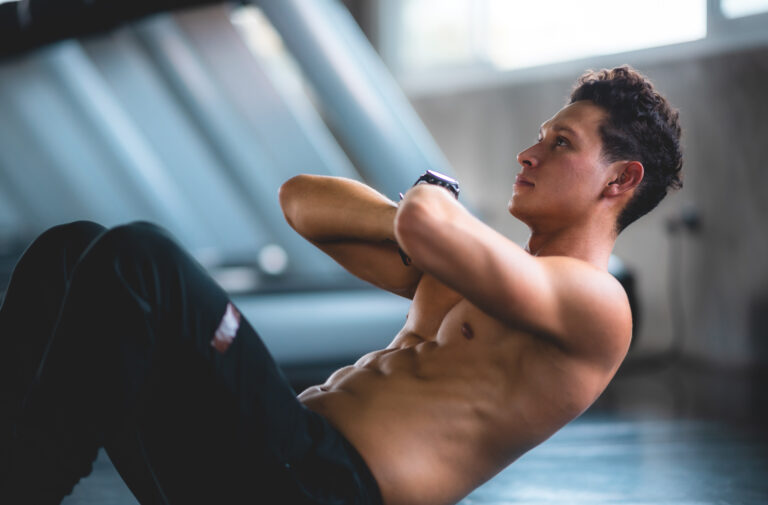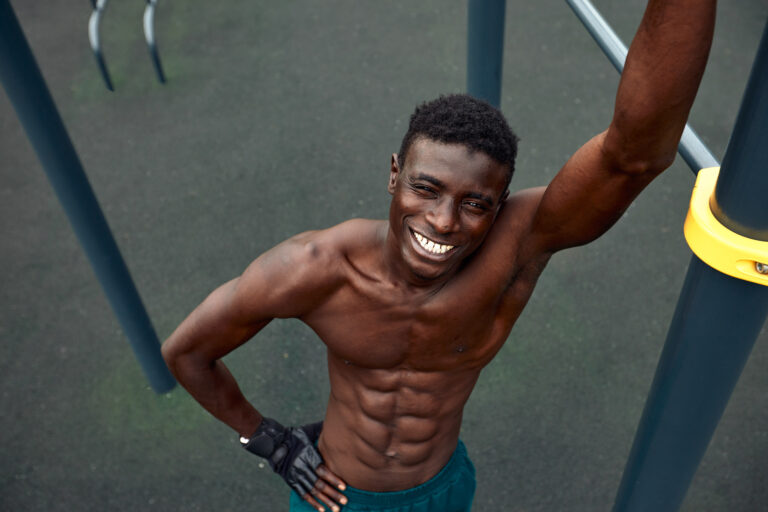What is the Serratus Anterior?
The serratus anterior is a crucial muscle for many athletes and fitness enthusiasts. It plays a significant role in the stability and movement of the shoulder blade, impacting various physical activities. Understanding its anatomy, function, and importance can help in preventing injuries and improving overall performance.
Anatomy and Location
The serratus anterior muscle is located on the lateral side of the thorax. It originates from the surface of the first to the eighth ribs at the side of the chest and inserts along the entire anterior length of the medial border of the scapula. This muscle is easily recognizable by its saw-tooth appearance, which is where it gets its name – ‘serratus’ means saw in Latin.
The serratus anterior is divided into three sections: superior, intermediate, and inferior. The superior part arises from the first and second ribs and inserts into the superior angle of the scapula. The intermediate part originates from the second to the fourth ribs, inserting along the medial border of the scapula. The inferior part, the largest, comes from the fifth to the eighth ribs and inserts into the inferior angle of the scapula.
This muscle lies deep to the scapula and pectoral muscles, making it challenging to visualize without anatomical illustrations. The serratus anterior works closely with other muscles, such as the trapezius and rhomboids, to facilitate smooth scapular movements.
Functions
The serratus anterior is primarily responsible for the protraction and upward rotation of the scapula. This action is essential for the elevation of the arm above the head. For instance, when an individual lifts their arm to grab an object from a high shelf, the serratus anterior contracts to move the scapula forward and upward, allowing for a greater range of motion in the shoulder joint.
Another critical function of the serratus anterior is to stabilize the scapula against the thoracic wall. This stabilization is vital during pushing movements, such as during a push-up or bench press, where the scapula must remain securely in place to provide a stable base for the arm muscles to exert force.
In addition to these functions, the serratus anterior plays a significant role in breathing, particularly in activities requiring forced respiration. During heavy breathing, this muscle helps expand the rib cage, allowing for increased lung capacity and more efficient oxygen intake.
Biomechanics
The biomechanics of the serratus anterior involve its coordination with other muscles and joints to facilitate complex upper body movements. When the serratus anterior contracts, it pulls the scapula forward around the rib cage, which is known as scapular protraction. This movement is crucial in activities such as punching in boxing or pushing against resistance.
The upward rotation of the scapula, another key function of the serratus anterior, is essential for overhead movements. This rotation is achieved through the combined action of the serratus anterior and the upper and lower fibers of the trapezius muscle. When these muscles work together, they rotate the scapula upward, increasing the arm’s range of motion.
The serratus anterior also works in opposition to the rhomboid muscles, which retract the scapula. This antagonistic relationship ensures balanced scapular movements and stability during various physical activities. For example, during a rowing exercise, the rhomboids retract the scapula while the serratus anterior controls its protraction, allowing for smooth and coordinated movements.
Common Injuries and Disorders
Injuries to the serratus anterior can significantly impact an individual’s ability to perform upper body movements. One common issue is scapular winging, where the medial border of the scapula protrudes outward due to weakness or paralysis of the serratus anterior. This condition can result from nerve damage, particularly to the long thoracic nerve, which innervates the serratus anterior.
Symptoms of scapular winging include shoulder pain, limited range of motion, and difficulty performing overhead activities. Diagnosis typically involves physical examination and imaging studies, such as MRI or ultrasound, to assess the extent of muscle damage and rule out other causes of shoulder dysfunction.
Treatment for scapular winging often includes physical therapy focused on strengthening the serratus anterior and improving scapular stability. In severe cases, surgical intervention may be necessary to repair damaged nerves or reattach the muscle to the scapula.
Another common issue is muscle strain, which can occur from overuse or sudden excessive force. This type of injury is often seen in athletes who perform repetitive overhead movements, such as swimmers or weightlifters. Symptoms of a serratus anterior strain include sharp pain along the side of the chest, difficulty moving the arm, and muscle spasms.
Rehabilitation and Strengthening Exercises
Rehabilitation of the serratus anterior typically involves a combination of stretching, strengthening, and functional exercises. Stretching exercises can help alleviate tightness and improve flexibility. One effective stretch is the wall slide, where an individual stands with their back against a wall, arms at 90 degrees, and slowly slides their arms up while keeping the elbows and wrists in contact with the wall.
Strengthening exercises are crucial for restoring function and preventing future injuries. One of the most effective exercises for the serratus anterior is the push-up plus, which adds an extra scapular protraction at the top of a standard push-up. This movement targets the serratus anterior specifically, enhancing its strength and stability.
Other effective exercises include the dynamic hug, where the individual stands with arms extended forward and brings the arms together in a hugging motion, focusing on scapular protraction. Resistance band exercises, such as serratus punches, can also be beneficial. In this exercise, the individual holds a resistance band with both hands and performs a punching motion while keeping the scapula protracted.
Functional exercises that mimic daily activities or sports-specific movements are essential for comprehensive rehabilitation. For athletes, incorporating sport-specific drills that engage the serratus anterior can help transition from rehabilitation to full activity. For example, swimmers can perform dryland exercises that mimic their stroke mechanics, ensuring that the serratus anterior is adequately engaged.
Preventative measures to avoid serratus anterior injuries include maintaining good posture, especially during prolonged sitting or standing. Ensuring proper warm-up and cool-down routines before and after workouts can also help reduce the risk of muscle strain. Incorporating regular strength training and flexibility exercises for the shoulder girdle can further enhance muscle balance and stability.
Role in Sports and Physical Activities
The serratus anterior plays a pivotal role in many sports and physical activities, particularly those involving overhead movements. In boxing, for example, the serratus anterior is critical for delivering powerful punches. It helps protract the scapula, allowing for a greater reach and more force behind each punch.
In swimming, the serratus anterior is essential for the propulsive phase of the stroke. It stabilizes the scapula, allowing the swimmer to generate maximum force during arm movements. Proper function of this muscle is crucial for efficient and powerful strokes, directly impacting performance.
Weightlifters also rely heavily on the serratus anterior, especially during exercises like the overhead press and bench press. The muscle helps stabilize the scapula, providing a strong and steady base for lifting heavy weights. Ensuring the serratus anterior is strong and functional can help prevent injuries and improve lifting efficiency.
Other sports that benefit from a well-developed serratus anterior include volleyball, tennis, and basketball. In volleyball and tennis, the muscle is involved in serving and spiking, where powerful and controlled arm movements are necessary. In basketball, it aids in shooting and passing, where scapular stability and arm reach are essential.
Key Takeaways
The serratus anterior is a vital muscle for various upper body movements, particularly those involving the scapula and shoulder joint. Understanding its anatomy, function, and role in sports can help in preventing injuries and improving performance. Strengthening and maintaining the health of the serratus anterior through targeted exercises and proper training techniques is essential for athletes and fitness enthusiasts alike.









